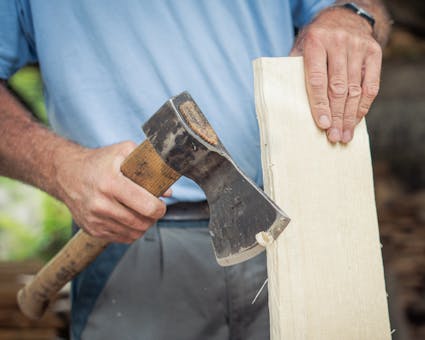Shingle making
For many years shingle roofs shaped the landscape of rural areas such as the Emmental or the Bernese Oberland, and even many valleys in the canton of Graubunden. The material for these roofs was available in the immediate vicinity and offered significant advantages. The temperature inside a house with a shingle roof is generally very pleasant, as the wooden shingles regulate the difference between the temperature outside and inside. Similarly, there is no condensation under the roof.
A roof made of pine or fir tree shingles will last for between 30 and 50 years; one made from larch shingles will last for up to 70 years. The method of production plays a vital role in the lifespan of the shingles. The trunks must be carefully selected. Slow-growing and evenly formed trees with scabby bark and few hanging branches are particularly suitable. They should preferably be felled in winter when the sap is at rest.

Precision and dexterity
The very manner in which the shingles are made directly affects their lifespan: splitting the wood by hand leaves the wood fibres intact, whereas splitting it with a machine cuts into the fibres in many cases, causing a subsequent loss in the surface sealing qualities of the wood. Consequently, hand-cut shingles have a substantially longer lifespan. After felling, the tree trunk is cut into 40 to 60 cm lengths which are then split lengthwise. With the shingle froe the shingle maker then splits the 10 to 15 cm wide pieces of wood into 5 to 6 cm thick shingles.
This craft, which was on the verge of dying out not so very long ago, is nowadays in increasing demand and shingle roofs are becoming ever more popular. The know-how is passed on in courses – have a look, for example at www.ballenbergkurse.ch. The precision and dexterity required for shingle-making is demonstrated at the Brandboden (4) when the museum’s shingle makers are at work there.
Ballenberg
Swiss Open-Air Museum
Museumsstrasse 100
CH-3858 Hofstetten bei Brienz
Opening hours
10 April to 2 November 2025
10 am to 5 pm daily